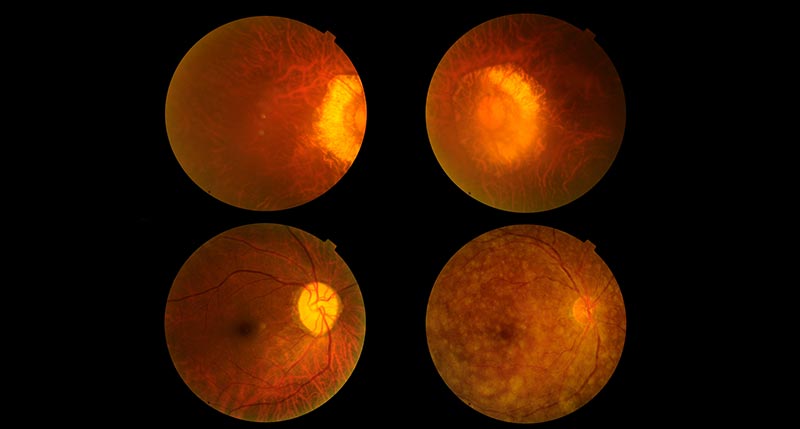Proper eye care in school-age children is invaluable to their overall health and well-being. Just look at the statistics: 1 in 5 American preschool-age children have an uncorrected vision issue. An estimated 10 million children under age 10 have vision problems. Difficulty seeing can affect their ability to learn, and in some cases, lead to a behavioral misdiagnosis. That’s a sobering fact when you consider that 80% of what children learn in their first 12 years comes through visual learning — vision is our dominant sense!
School vision screenings miss 75% of vision problems
If you are the parent of a child who struggles with learning or whose behavior is causing problems in the classroom, we recommend a comprehensive eye exam with an optometrist to determine whether your child’s visual system is performing at its best. Your school’s annual eye screening is insufficient in identifying all the factors that contribute to good vision. School visual screenings miss up to 75% of children with vision problems that could negatively impact learning.
Did you know that being able to read the 20/20 line on the eye chart is only one of 17 visual skills needed for optimal vision? A child with 20/20 vision can still have problems focusing, tracking or coordinating. You may be shocked to learn that an estimated 40% of children diagnosed with learning disabilities have uncorrected vision problems — not a learning disability!
Uncorrected Vision Problems Are Often Misdiagnosed
Because learning and vision are so interconnected, uncorrected visual challenges may be mistakenly diagnosed as behavioral or learning disabilities. Children with significant vision problems and those with ADHD exhibit similar behaviors, and children with vision problems are two times more likely to be diagnosed with ADHD.
A child experiencing vision problems may exhibit restless behavior that can be disruptive in a classroom setting. These children are unable to communicate that they are having difficulty seeing because they have never experienced good vision.
One common eye condition that can exhibit symptoms similar to ADHD is Convergence Insufficiency (CI) — which causes blurred or double vision when the eyes work together to view up-close objects such as a book or phone screen. Any child with ADHD symptoms should be evaluated for CI, which may be the root cause of the problem. Children with CI are three times more likely to be diagnosed with ADHD. Unfortunately, a child with poor eyesight may be branded a “problem kid” because they act out in the classroom and exhibit inappropriate behavior in social settings.
9 Behaviors That Suggest Undiagnosed Vision Issues in Children
Following are nine behaviors that teachers and parents should watch for, as they may indicate that a student is struggling due to a vision problem:
- Disruptive talking. The child may talk while the teacher instructs the class, because she is asking a fellow student what the teacher is writing on the board. She may be hesitant to speak up or read aloud.
- Clumsiness. The student may bump into desks, furniture, or trip over things. A possible depth perception problem could be the culprit.
- Acting out. If a child acts out in the classroom, is it because they don’t know the rules or because when kids can’t see, they miss the subtle behaviors and rules that are part of classroom etiquette?
- Disinterest in school work. A student with a vision issue can become disinterested in school work because it takes them longer to complete assignments — so they find alternative activities that may disrupt the classroom.
- Headaches and squinting. The child may consistently complain of headaches, put their head down, squint, or close their eyes.
- Can’t maintain focus. A student who can’t maintain focus on any activity for any length of time may be impulsive or distracted. It’s critical to explore whether the cause is ADHD or a vision problem.
- Holding things too closely. The student holds objects close to their face to be more involved in an action like cutting with scissors or writing. Or maybe they hold a book too close to see the words clearly.
- Self-isolation. A child who self-isolates during recess may be avoiding the embarrassment of missing balls or stumbling during play.
- Social awkwardness. A child who can’t see facial cues may feel socially awkward and hang back from participating in groups, isolating themselves from interacting and playing.
Children can be easily misdiagnosed with a behavioral disorder when, in fact, it just doesn’t exist. As a parent, it’s a smart strategy to ensure that your child has good visual acuity, eye teaming, and functional vision skills first — before exploring other potential causes of behavioral issues.
Visual problems left untreated or misdiagnosed as behavioral issues may lead to life-long struggles coupled with the stress of trying to compensate for these insufficiencies.
If you are a parent who suspects that your child may have a vision problem that is contributing to their behavioral or learning problems, call our office today! Our goal is to find and correct the root cause of your child’s vision problems. A comprehensive eye exam will determine whether their visual system is functioning ideally.
Good vision will give your child the start to the new school year that they deserve!





